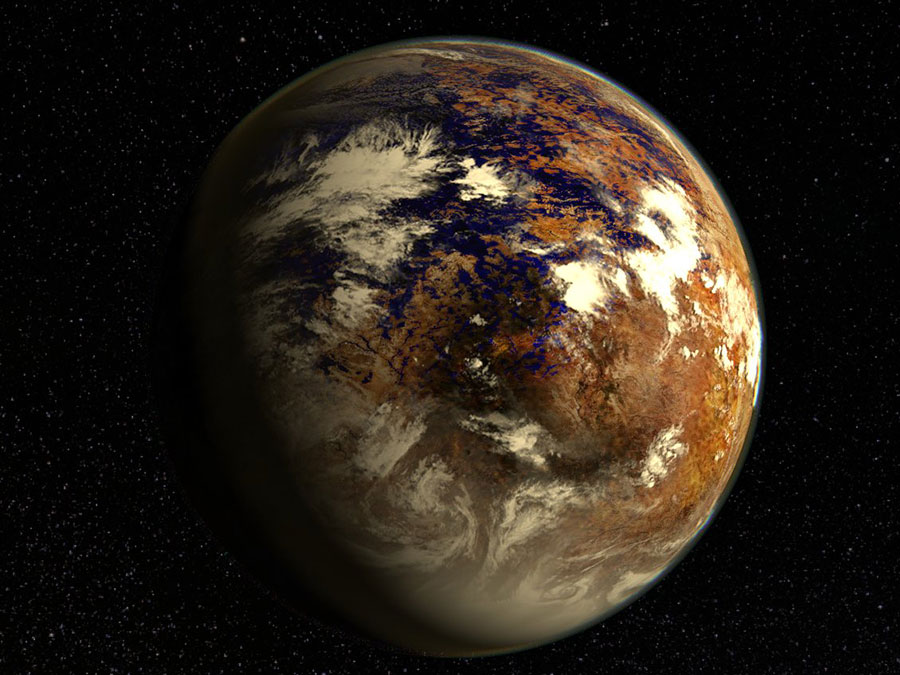Researchers have recently found Proxima B an exoplanet that is almost in Earth‘s neighborhood, and experts are currently studying the possibilities of humans inhabiting the newly-found exoplanet.
For years researchers have been studying the Centaurus constellation and Proxima Centauri, a red dwarf star located 4.25 light-years away from our Sun, on August 24th researchers found an exoplanet orbiting the star that seemed promising for humans. Proxima B is an exoplanet that scientists are calling Earth 2.0, since it has a very similar size and it orbits its star in a perfect way for life to exist, just 5% of the distance between Earth and the Sun, among other characteristics.

Researchers are focused on studying the exoplanet’s composition, atmosphere and interaction with the dwarf star to understand how likely would it be for humans to support their existence on Proxima B. However, more studies and investigations need to be made.
“The good news is that it is so close it is not only nice for having in our neighborhood, but it’s a dream come true for astronomers if we think about follow-up investigation,” said Ansgar Reiners, the study’s first author.
Initial studies have named Proxima B as the closest star to Earth’s Sun, they have also shown the exoplanet’s distance with the red dwarf star locates it in the perfect spot that researchers call “habitable zone” which means liquid water could be found in the exoplanet.
What do we know about Proxima B?
The recently discovered exoplanet is located 92.96 miles apart from our solar system, researchers believe it has a rocky surface, the size of the exoplanet it’s just 1.3 times more than Earth, and it possibly has a temperature that sustains water in liquid state.
A year in Proxima B only lasts 11.2 days, since that’s the time it takes the exoplanet to orbit its central star and researchers have made an estimate about Proxima B having an atmosphere between 86 to 104 Fahrenheit degrees.
Researchers using the European Southern Observatory determined Proxima B might be “potential life-bearing” because of the distance between the exoplanet and its star the temperatures could be just perfect to hold some sort of life.
However, scientists have clarified that the exoplanet is not so much “Earth-Like” since it’s susceptible to extreme radiation because of the bursts of energy the red dwarf star releases to the exoplanet.
Proxima Centauri emits flares that harm the planet’s atmosphere, researchers using the Canadian MOST (Microvariability and Oscillation of Starts) telescope determined the exoplanet received impacts of eruptions every 20 minutes.

“We knew it would have flares, but we didn’t realize it would be as riddled with flares as it is,” said James Davenport, a scientist at Western Washington University in Bellingham to the New Scientist.
The amount of impact derived from the red dwarf to the exoplanet’s atmosphere could endanger the possibilities of finding some life in Proxima B’s surface or the possibility of humans resisting the dangerous environment.
However, these are just speculations since researchers need more time to study the recently found exoplanet. Currently, James Davenport along with his team are studying Proxima B thanks to the MOST telescope, and they study it every time it orbits Proxima Centauri to determine it’s atmosphere, composition, right size and possibilities of life.
The flares received by Proxima Centauri makes studying the exoplanet a hard job since it’s emissions happen almost every 20 minutes and previous research on the star has shown over 66 different sizes and forms of flares coming from the dwarf star.
According to Nature World News, Davenport and his team are wondering how sustainable life can be in the exoplanet with that much harm to its atmosphere.
“If you are getting hit every couple of months, the atmosphere is never going to recover, so you are going to see slow degrading of it,” said the lead author of the study to Nature World News.
Scientists are still to determine the type of environment the exoplanet has, and it’s thickness, which could inform just how much impact these flares have on Proxima B’s surface and ground.
UV radiation is known to be dangerous for any living organism in a planet, but if the exoplanet’s atmosphere protects it enough, then life could perfectly live on Proxima B.
Despite being recently discovered, Proxima B is no stranger to science fiction, in fact, several novels including Stephen Baxter’s novel “Proxima” the author describes a planet very similar to the recently found. The author recently released an article to discuss the finding of the exoplanet similar to his novel.
Even though scientists and researchers are thrilled about discovering Proxima B’s “friendly” environment to life, more research on the recently found exoplanet needs to be made to understand really if it’s in fact, Earth 2.0.
Source: CNN Edition
